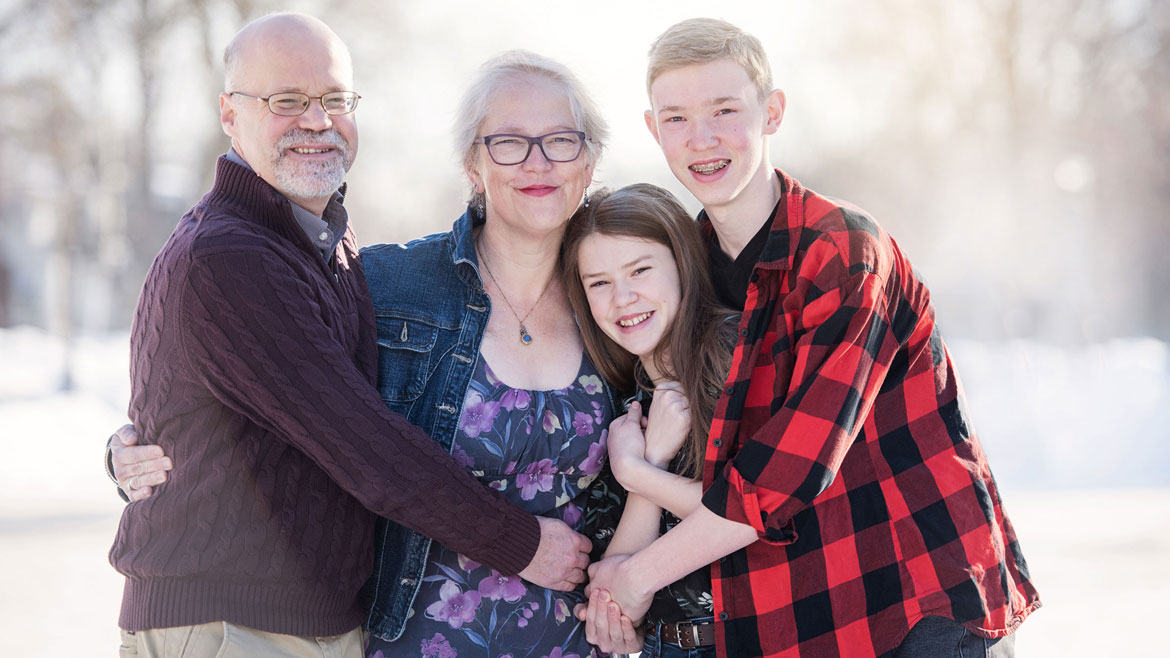
6 Good Alternatives to ‘How Can I Help?’
Hanna Cooper and her husband, Tom Moberg, of St. Paul, MN, with their kids, Emilia and William.
When I was unexpectedly diagnosed with stage 3 pancreatic cancer in 2016 at age 48, my family, friends and community were as shocked and bewildered as I was. With no time to prepare, we were suddenly facing loss of life as we knew it, and grief, too.
Cancer felt like a tsunami hitting shore, shattering plans into bits and tossing the fragments around like debris. Everyone rallied around us as we prepared for a future we no longer could predict or anticipate.
When someone you care about has been hit with a “rug-pulled-out-from-beneath-you” experience,it can be hard to know what to say, or do.
You wonder: “How can I help? I love this person, but I’m scared and don’t know what to do. If nothing else, I don’t want to make things worse.”
It can be bewildering to be plunged into a supporting role for someone whose life has been turned upside down.
Here are six pragmatic and caring ways to be helpful:
1. Show up and be present, within your own limits.
It’s OK if you don’t know what to say: simply acknowledging what’s happening, as horrible as it might be, matters. Know that your presence alone can be very comforting. Even admitting that you don’t know what to say is better than ignoring or minimizing the unanticipated and unasked-for reality.
2. Ask the person, “How are you, today?”
Then be sure to listen to the answer. The response might change, from day to day. While it can be exhausting for people in crisis to repeatedly talk about their trauma, asking “How are you doing, today?” allows them to share as much, or as little, as they wish.
3. Listen more; talk less.
There are no prizes for dealing with grief or loss “well” or “gracefully.” Mostly, people in the midst of a health crisis are just doing what they can, putting one foot in front of the other.
4. Practice empathy.
Put yourself in their shoes for 1 minute. Let yourself actually imagine being in their situation. If you’re struggling with your own emotional reaction to the other person’s loss, find someone who can be a buddy for you. With this person, you can process your feelings, rather than looking for comfort from the person with the loss.
5. Offer to do something tangible and useful.
Be specific: “I can drop off some soup on Thursday. How would that be?” While it may feel presumptive to make suggestions, offering something concrete, such as cleaning, cooking, or errands, simplifies things during a very overwhelming time. Your offer might also identify a need they didn’t even know they had.
6. Keep the invitations coming.
People with cancer still like to go to coffee. And to the movies. And out to eat. Be flexible and understanding if they decline, ask for a rain check, decide to leave the event early, or change their mind at the last minute. They’ll still likely appreciate being remembered, even if they aren’t ready for group activities yet. Know that if they don’t respond to your offers immediately, they’ll get back to you when they can/are ready.
While you can’t take away their pain or fix their loss, your care lets them know they aren’t alone. By showing up with care and concern, taking care of your own emotional needs, and providing concrete support for the grieving person, you’ll be providing both tangible care and meaningful comfort that will help them get through the hard times that are an inevitable part of being a human being.
New to CaringBridge and wondering what we do?
CaringBridge is a nonprofit social network dedicated to helping family and friends communicate with and support loved ones during a health crisis through the use of free, personal websites. Know someone who could benefit from starting a CaringBridge site to keep loved ones informed and get the love, and support they need?
Hanna Cooper, of St. Paul, MN, is a wife, mom of two, friend, neighbor, and leadership and executive coach. During her health journey, Hanna used CaringBridge to process her diagnosis and the Ways to Help section of her site to activate a GoFundMe campaign for financial support and the Planner to coordinate her Care Team of friends. Hanna is in the process of turning her CaringBridge Journal entries into a book.